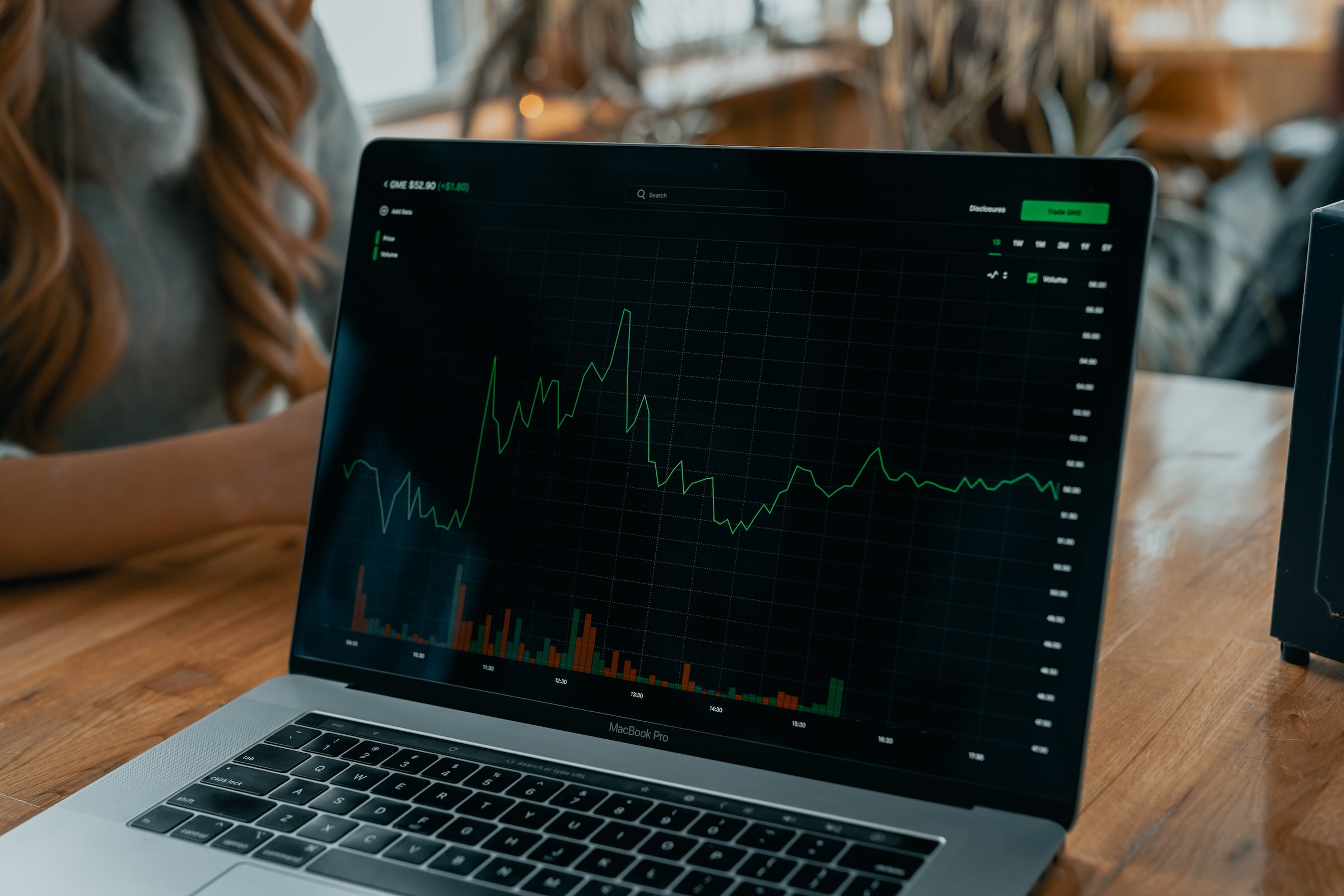Investors rely on a variety of predictions to make and monitor their investments. One key metric is the Dow Jones Industrial Average (DJIA), which is often used as a proxy for the movement of the market as a whole.
What does the future hold for the Dow? Here’s what you need to know about this all-important market index, as well as some Dow Jones predictions for 2023 and beyond.

What Is the Dow Jones Industrial Average?
The Dow Jones was created in 1896 through the partnership of Charles Dow and Edward Jones, who also happened to be the founders of the Wall Street Journal. The Dow Jones is a stock market index that tracks 30 large, blue-chip business stocks on both the Nasdaq and New York Stock Exchange (NYSE). Because the DJIA tracks 30 specific companies, it’s often referred to as the “Dow 30.”
The DJIA was created to serve as an indicator of the health of the market as a whole, and financial professionals use the Dow to assess the health of the U.S. economy even today.
Companies in the Dow
The Dow Jones Industrial Average contains 30 blue-chip stocks, representing companies known for their stability, success, and quality. Within the DJIA, you’ll find many familiar corporations, including:
- Coca-Cola (NYSE: KO)
- The Walt Disney Company (NYSE: DIS)
- McDonald’s (NYSE: MCD)
- Visa (NYSE: V)
- Wal-Mart (NYSE: WMT)
Essentially, the Dow 30 represents a specific cross-section of American industry, which is why it has served as a useful predictor of America’s economic health.
What Makes the Dow 30 Unique?
Companies in the DJIA tend to be large-cap stocks from well-established companies in a wide range of industries. But what makes them truly distinct from other businesses is that these corporations operate internationally, which means they’re influenced by broader global forces than the U.S. economy alone.
Consequently, issues like domestic inflation and recession don’t have as much of an impact on the Dow 30. On the other hand, the Dow 30 can be influenced by international trade deals and foreign economies.
Factors That Influence the Dow Forecast
Since the Dow is used to assess the economy as a whole, Dow Jones predictions can be useful when making or monitoring stock market investments. Several factors can influence these predictions, including:
1. International Politics
The Dow tends to be sensitive to global events such as natural disasters, war, political unrest, and international trade agreements.
2. Domestic Economy
The Dow Jones index can fluctuate with the U.S. economy. The DJIA generally follows such benchmarks as:
- Unemployment rates
- Job creation
- Interest rates
- GDP
Additionally, the Dow is used along with these other factors to measure America’s general economic health.

3. Industry Trends
While the Dow 30 represents a diverse cross-section of American businesses, the index can still experience the impact of trends within industries. For instance, advances in the tech sector can give the DJIA a boost, and retail trends can likewise influence its standing.
4. Consumer Behavior
Consumer spending also influences the performance of companies within the Dow 30.
This explains why inflation can influence the performance of the Dow — as discretionary spending decreases, so does the performance of retailers and other critical Dow corporations.
Dow Jones Predictions 2023
What is the Dow forecast for 2023 and beyond? The current state of the globe and the U.S. economy makes the following Dow Jones predictions possible.
Overall Decline
Unfortunately, the overall trajectory for the Dow Jones index is trending downward.
Domestically, the United States is still combatting the effects of inflation, rising interest rates, and the looming threat of an economic recession. As a result, consumer spending is in decline for all but the bare essentials. And as more consumers flock toward eCommerce platforms, even retail giants are struggling to adapt.
Internationally, the Ukrainian conflict continues to cast a shadow on the international economy. This is especially true now that Russian oil is no longer finding its way to international markets, which could contribute to stagflation across multiple industries.
These concerns are only recent additions to ongoing worries about the global supply chain and trade embargoes causing major hang-ups for international trade. Consumers can expect to continue seeing empty grocery shelves and high prices of new and used vehicles until these conditions stabilize.
Hedge Against a Market Crash
Experts are divided about the possibility of an impending market crash. But even if the risk of a stock market crash is slim, it’s always good to hedge your investments to protect yourself. Carrying a diverse portfolio can mitigate the risk of a sudden downturn and give you stability for the years ahead.
Best Dow 30 Stocks to Invest in for 2023
This negative Dow Jones prediction may actually be good news for new investors. With the market as a whole in decline, investors may discover that they can snag some large-cap, buy-and-hold stocks to stabilize their portfolios.
Dow 30 stocks already make excellent holdings for any portfolio, and large-cap stocks generally have sufficient stability to weather an economic downturn while offering long-term growth potential. Furthermore, stocks in the Dow Jones index tend to come from diverse industries, allowing investors to sufficiently diversify their portfolios.
Consider purchasing stocks in some of these top-performing Dow 30 companies:
- Johnson & Johnson
- Wal-Mart
- Merck and Company
- Unitedhealth Group
- Ryder System
Even during an unstable domestic economy, these businesses and their respective industries can prosper, as can other consumer staples stocks, energy stocks, and healthcare.
Rising prices and consumer spending can also fuel the future success of these companies and sectors. As such, investing in these stocks in the near future can position you for large gains as the market begins to level out.
Dow Forecast for 2024
What about the future beyond 2023? Some economists believe domestic inflation may normalize by 2024, but what might this mean for the Dow Jones Industrial Average?
The stabilization of the U.S. economy would be a boon for consumer spending and companies in many different industries. However, it’s not immediately clear that this will happen early enough in 2024 to dramatically impact the U.S. stock market.
Similarly, some experts have raised concerns about international trade monopolies and legislation over data privacy which could directly or indirectly impact Dow companies. Depending on the outcomes of these scenarios, it could take some time for the Dow to fully recover.
Limitations of the Dow
A Dow prediction has its uses but can’t always be relied on as the sole metric for the state of the U.S. economy. For one thing, these 30 companies don’t necessarily represent American business as a whole, as it comprises many different companies of varying sizes and industries.
The Dow is also a price-weighted index, which means that companies with higher share prices exert greater influence over the index’s performance. This can affect the reliability of the DJIA since the movement of the index can be artificially inflated by changes made by a high-priced company.
Given these factors, the Dow Jones index should be just one way that you make investing decisions and fit into a broader arsenal of investment research tools.

Find the Right Tools Today
Looking for access to the best stock research? Gorilla Trades members get more educational content like this, as well as stock alerts, research tools, and more.
Sign up today and get 30 days of free stock alerts to see how Gorilla Trades can help you trade like a seasoned investor.




